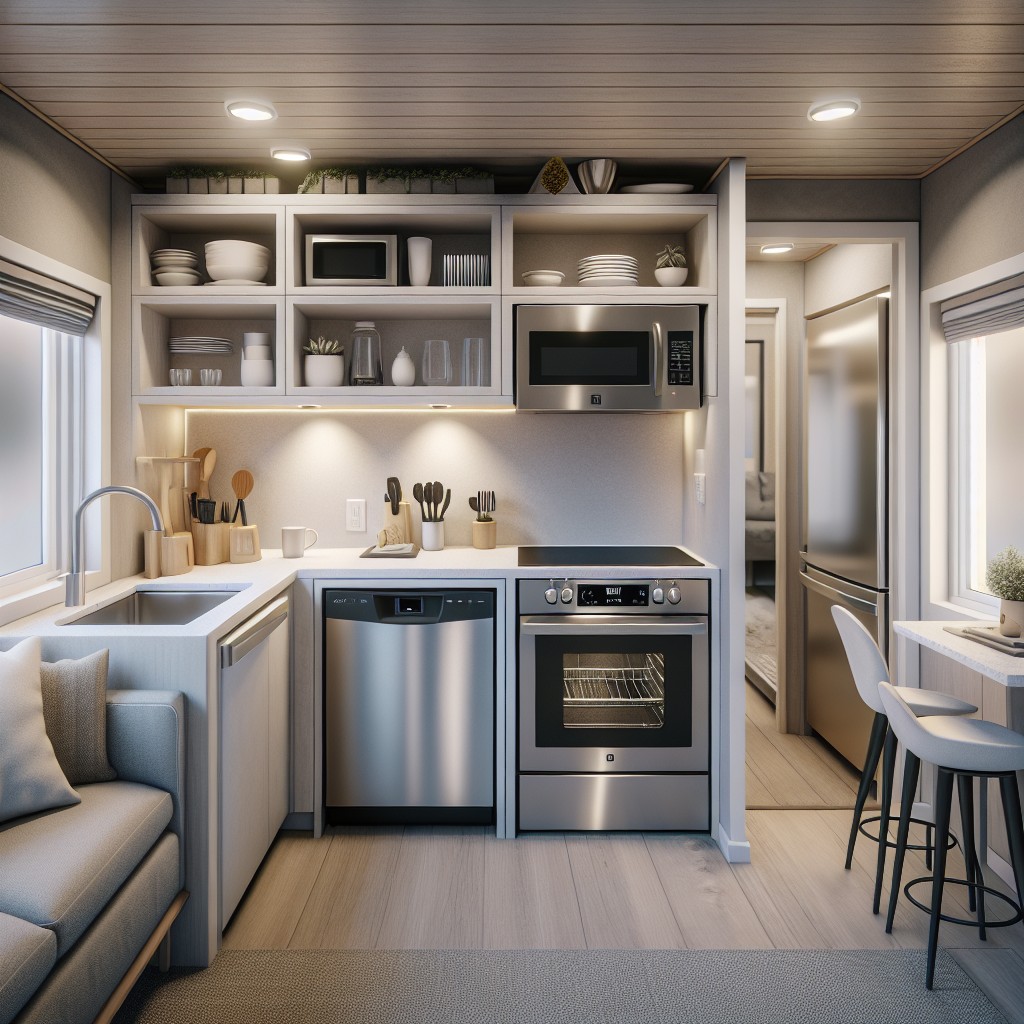Last updated on
Learn the factors that determine the maximum size of an accessory dwelling unit and how to maximize your property’s potential.
Key takeaways:
- Size limits for ADUs vary by state
- Local zoning laws impact the size of an ADU
- Different types of ADUs have different size restrictions
- Local building codes outline size and placement limitations
- Understanding regulations is key to maximizing your ADU’s potential.
Defining Accessory Dwelling Units (ADUs)

Accessory Dwelling Units, or ADUs, are self-contained living spaces on the same property as a main residence. Picture a cozy backyard cottage or a basement turned into a modern apartment—these are classic examples of ADUs in action. They usually come equipped with their own kitchen, sleeping area, and bathroom, essentially functioning as a separate home. Ideal for housing family members, renting out, or simply having a private retreat, ADUs are a smart way to add value and versatility to your property. They’ve also gained popularity as a solution for affordable housing, allowing homeowners to maximize their space and contribute to community diversity. Remember though, just like snowflakes, no two ADUs are identical; they reflect the character of the homeowner and adapt to the limitations or opportunities of the property.
State Regulations and Size Limits
Picture this: each state is like a head chef with its own recipe for how sizable or small your ADU can be. Generally, most states will serve up a size range of 600 to 1,200 square feet. But, as with any good recipe, there’s always room for a pinch of local flavor.
California’s got a sunny disposition towards space, inviting ADUs up to 1,200 square feet, depending on the property size. Texas, on the other hand, likes to keep things cozy—limiting ADUs to half the size of the primary dwelling. Oregon walks a middle path, capping them at a roomy 800 square feet.
Remember, states lay the ground rules, so imagine these as the base of your homebuilding pizza before the local toppings – I mean, regulations – are added. Before you draft blueprint dreams, grab a slice of advice from your city’s planning department to sidestep any size-related snafus.
Local Zoning Laws Impacting ADU Size
Before you start planning your ADU, it’s crucial to get cozy with your local zoning rules—they’re the invisible fence lines that can dictate the size of your future unit. These regulations are as local as your neighborhood diner, meaning what works in one city might not fly in another.
Think of your local zoning laws as a recipe; there’s a specific set of ingredients and measurements to follow. They include setbacks from property lines, maximum heights, and sometimes even lot coverage limits, all of which can impact how much room you have to build.
Ever heard of Floor Area Ratio (FAR)? It’s a key term in the ADU cookbook. FAR caps the total square footage of all buildings on your lot relative to the size of that lot. Dive into the details—whether you can stretch your ADU to be a roomy two-bedroom or need to keep it cozy as a studio may depend on this little number.
And don’t forget about historic districts or homeowners’ association rules. In these areas, the rulebook can be even thicker, with additional standards that can shrink the size of your ADU ambitions.
Lastly, keep an ear to the ground for changes. Zoning laws can evolve, much like a city’s skyline, and staying abreast of updates can mean more square footage for your ADU project down the line. It’s like an ongoing conversation with your city that you don’t want to miss out on.
Types of ADUs and Their Size Differences
Accessory dwelling units come in a kaleidoscope of shapes and sizes, each with its own character and quirks. Picture the detached ADU – often a self-contained cottage tucked away in the backyard. Generous in size, it might stretch close to your lot’s limit, offering a full living experience with separate access, a cozy kitchen, and all the trimmings of a small home.
On the flip side, attached ADUs are more like a home’s close cousin, sharing at least one wall with the primary residence. They’re often more modest in stature, carved out of unused space such as a garage or basement. These can be great for those who want to keep their loved ones within arms’ reach.
Then there’s the junior ADU – think of it as the little sibling in the ADU family. Nestled within the walls of the main house, it’s a pint-sized space, usually maxing out around 500 square feet. It’s perfect for someone who values compact living and doesn’t need much elbow room.
Each type whispers a different story, and the plot twist is how these various ADUs dance with the size restrictions set by your local zoning laws. Choosing the type of ADU is like picking a character in a play – what role do you want it to perform on your property stage?
Navigating Local ADU Building Codes
Diving deeper into local ADU building codes, it’s a bit like piecing together a jigsaw puzzle. These regulations provide the blueprint for your project’s limitations and possibilities. While state laws give a broad-stroke idea of ADU restrictions, it’s the municipality’s ordinances that fine-tune what’s permissible on your property.
First off, size does matter. Your city or county will often dictate a maximum square footage for your ADU. This number might be a percentage of your primary dwelling’s size or a fixed upper limit. For instance, some places cap ADUs at 1,200 square feet, while others may tether the size to not exceed 50% of the main residence.
Second, consider setbacks. These are non-negotiable buffers between your ADU and property lines, streets, or other structures. Ensuring privacy and safety, setbacks can affect the placement and size of your potential ADU.
Third, height restrictions may come into play. If you’re planning a two-story granny flat, acquaint yourself with limits on building height. This can ensure your ADU doesn’t block views or overshadow neighboring homes.
Lastly, don’t overlook parking requirements. Some locales might mandate additional off-street parking spaces to accommodate the ADU. This seemingly small detail can have a big impact on your construction plans.
Think of these codes as a treasure map, guiding you to a successful build rather than a series of obstacles. Their purpose is to harmonize your ADU with the community fabric, balancing individual creativity and collective harmony. Stay informed, be patient, and when in doubt, a chat with local building officials can clarify any gray areas and keep your project on the straight and narrow.
Related reading:
Table of Contents





